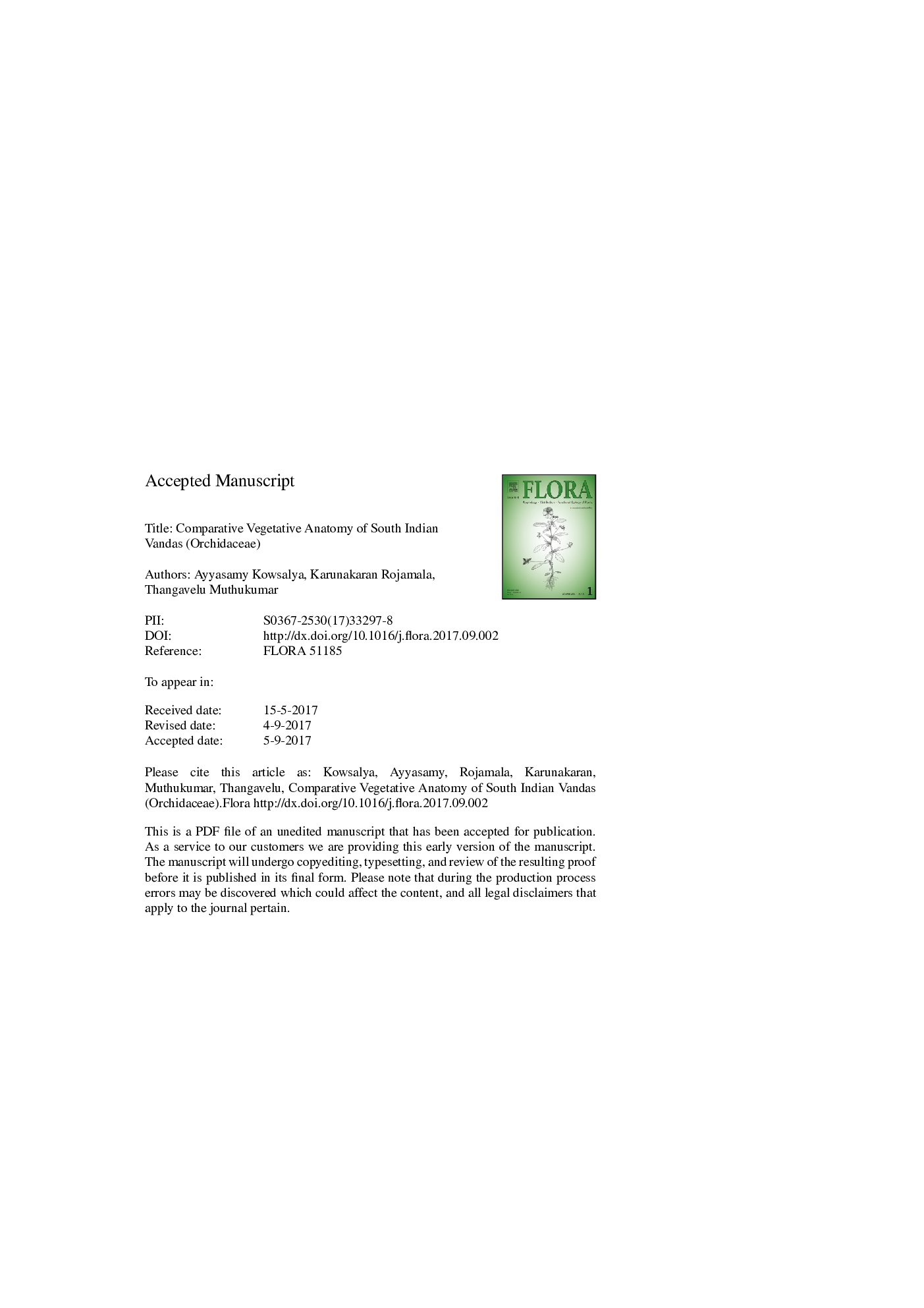| Article ID | Journal | Published Year | Pages | File Type |
|---|---|---|---|---|
| 8470258 | Flora - Morphology, Distribution, Functional Ecology of Plants | 2017 | 36 Pages |
Abstract
Anatomical information serves as an important tool in identifying plants at their vegetative stage. The leaf, stem and root anatomy of Vanda spathulata (L.) Spreng., Vanda tessellata (Roxb.) Hook. ex G.Don, Vanda testacea (Lindl.) Rchb.f., and Vanda wightii Rchb.f., belonging to the tribe Vandeae in subfamily Epidendroideae were examined using different staining techniques. The important characters are as follows: the leaves have a cuticle, but the distribution and type of stomata vary. Epidermal cells are isodiametric on both the leaf surfaces. The hypodermis varies with species. The mesophyll is homogenous and vascular bundles are collateral. The stems have cuticularized epidermis with a homogenous ground tissue and scattered vascular bundles. Raphides are present in the stems of V. tessellata and V. testacea. The velamen in roots of all the Vanda species have cells with spirally thickened walls. Exodermal cells are long and dimorphic. The multi-layered parenchymatous cortex contains fungal pelotons, water-storage cells, and aeration cells. A cover layer envelops the uniseriate endodermis in V. tessellata and V. testacea. The vascular cylinders are 12-20 arched. Xylem and phloem are embedded in sclerenchymatous tissues. Parenchymatous cells of leaf, stem, and root of V. wightii contain reniform starch grains. The size of the root regions and cells are significantly variable among the Vandas. A simple dichotomous key based on the leaf and root anatomical characters for the identification of the south Indian Vanda species is provided.
Keywords
Related Topics
Life Sciences
Agricultural and Biological Sciences
Ecology, Evolution, Behavior and Systematics
Authors
Ayyasamy Kowsalya, Karunakaran Rojamala, Thangavelu Muthukumar,
